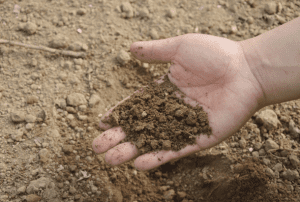Climate change impacts on apple productivity and quality
Weather & EnvironmentGordon Brown reviews research investigating the impact of elevated CO2 and temperature on apple production.
Climate change is here and we can expect to see further increases in atmospheric CO2 and temperature in the years to come. We know that elevated levels of CO2 result in increased rates of photosynthesis so this is good for apple production. The problem is that elevated temperatures reduce photosynthesis and increase the rate of respiration and this is bad for apple production. So what does the future look like for apple production under climate change? The South Korean government is interested in this so it has conducted research to investigate the impact of elevated CO2 and temperature on apple production.
Method
The project involved building several large chambers (4x3x6m) in a field and then waiting for two years to stabilise the environment inside the chambers prior to planting eight Fuji trees on M9 rootstocks into each chamber. These trees were studied for the following eight years. The chambers were computer controlled, with two mimicking the outside conditions, two had elevated CO2 levels at 650ppm (not quite double atmospheric levels), another two had atmospheric temperatures inside 5°C above those outside the chamber, and the final two chambers had both elevated CO2 and temperature.
Results
As predicted, the elevated temperatures inside the chambers resulted in a reduction in the shoot growth of the trees (Figure 1), while the elevated levels of CO2 increased the shoot growth of the trees. While increased growing temperatures in the high CO2 chamber reduced the growth of trees, the net impact of the combination was that the trees still outgrew those in the normal atmosphere. This suggests that apple trees will grow more vigorously in the future with high levels of atmospheric CO2 and temperature.

Figure 1: The total shoot growth (metres per tree) of Fuji apple trees after 8 years inside the environmental growth chambers.
So while the impacts of climate change do not look too bad for tree vegetative growth, the impact of climate change on yield of fruit is more important. Unfortunately the picture is not so good for cumulative yield of fruit over the first eight years of orchard life, with both elevated temperatures and CO2 individually causing a dramatic reduction in yield. It is fortunate that the combined elevated CO2 and temperature, as will occur under climate change, seems to reduce yield to a similar level to elevated CO2 alone. This indicates that under climate change we will see a 10 per cent reduction in potential yield of apples.

Figure 2: The total yield of fruit per tree over the first 8 years of orchard life.
A 10 per cent reduction in potential yield with climate change is not good news for orchard finances, however, this may not be so important if fruit quality is improved. The news on fruit quality is not good, though. While there was an improvement in fruit firmness, climate change would appear to cause a reduction in fruit sugars and an increase in fruit acidity at harvest (Table 1) leading to tarter tasting fruit. The fruit in the climate change chambers were producing double the amount of ethylene, suggesting that harvesting will be advanced due to the fruit being more mature.
Table 1: Quality of harvested fruit from 8-year-old Fuji trees growing in normal and in elevated CO2 and temperature atmosphere. The firmness measurements used a 5mm penetrometer probe rather than the 8mm one normally used in Australia.
| Current atmosphere | High CO2 and high temperature | |
| Firmness (kgf, 5mm) | 3.2 | 3.8 |
| Sugars (TSS °Brix) | 15.1 | 12.2 |
| Acidity (%) | 0.17 | 0.23 |
| Ethylene (ml/kg/h) | 0.48 | 0.98 |
While these changes in fruit internal quality are not good, they are not the worst impact of climate change on apple quality. Both high temperature and high CO2 virtually eliminate red colouration of the fruit (Figure 3). This means that red colour development of fruit will be far more difficult as climate change progresses. As red colouration is a key character for market success it will be necessary to use really red clones of apples in future plantings.

Figure 3: Impact of climate change on colour of apple fruit. Ambient CO2 and temperature (a), elevated CO2 (b), elevated temperature (c) and both elevated temperature and CO2 (d).
Unfortunately colour is not the only skin character affected by climate change and it can be seen in Figure 4 that climate change also dramatically reduces the thickness of the apple fruit skin. This means that the fruit will be more prone to skin damage. This may mean that apple cultivars, possibly in heritage collections, that are not commercially viable at the moment due to tough skins may be useful as climate change progresses.

Figure 4: Impact of climate change on apple fruit skin. Ambient CO2 and temperature (a), elevated CO2 (b), elevated temperature (c) and both elevated temperature and CO2 (d).
Take home messages
Climate change will:
- increase vegetative vigour at the expense of fruit yield in apples.
- reduce fruit sugars and increase fruit acids leading to tarter tasting apples.
- cause red apples to be greener reducing their attractiveness to consumers. To overcome this it will be necessary to plant really red clones of apples in the future.
- lead to apples with thinner skins more prone to damage. This may mean a re-evaluation of cultivars available to growers to select for really red fruit with thick skins.
Further reading
Lee IB, Jung DH, Kang SB, Hong SS, Yi PH, Jeong ST and Park MJ (2023) “Changes in growth, fruit quality, and leaf characteristics of apple tree (Malus domestica Borkh. ‘Fuji’) grown under elevated CO2 and temperature conditions”, Horticultural Science and Technology, 41(2):113–124. www.hst-j.org/articles/pdf/QRDd/kshs-2023-041-02-1.pdf.
This article was first published in the Spring 2023 edition of AFG.




